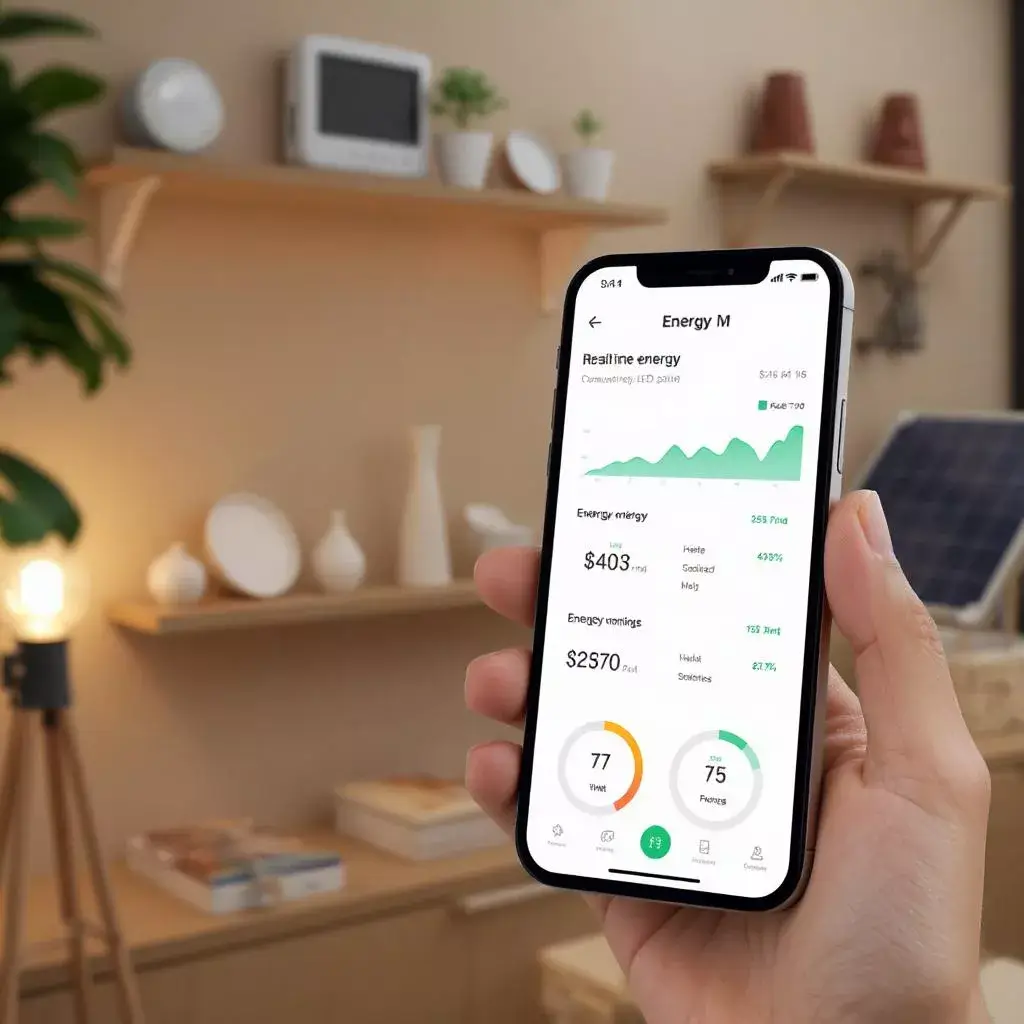1. Introduction
- With rising energy costs and growing concerns about climate change, individuals and households must take steps to monitor and reduce their energy consumption. Energy monitoring apps provide real-time insights into power usage, helping users save money and reduce their environmental impact.
- This article explores how energy monitoring apps work, their benefits, and how to use them effectively.
2. The Importance of Energy Monitoring
Reducing Energy Bills: Helps identify excessive power consumption and cut costs.
Environmental Impact: Lowers carbon footprint by promoting energy-efficient habits.
Real-Time Insights: Provides instant data on energy usage and trends.
Customizable Alerts: Notifies users of unusual energy spikes.
Integration with Smart Devices: Works with smart plugs and appliances for automated savings.
3. How Energy Monitoring Apps Work
Data Collection: Tracks energy usage via smart meters or plug-in monitors.
Usage Analysis: Breaks down consumption by appliance or time of day.
Cost Estimation: Estimates monthly electricity bills based on usage.
Historical Comparisons: Shows trends over time to encourage efficiency.
Recommendations: Provides tips for reducing energy consumption.
4. Best Energy Monitoring Apps Available
Sense Energy Monitor: Real-time tracking with AI-driven appliance detection.
Emporia Energy: Budget-friendly app for whole-home monitoring.
Flume Water Monitor: Tracks water and energy usage together.
Eyedro: Provides business and home energy tracking solutions.
Neurio Home Energy Monitor: Offers solar integration for energy-conscious homes.
5. How to Set Up an Energy Monitoring App
Select a Compatible App: Ensure compatibility with your smart meter or energy monitor.
Install the Hardware (if needed): Some apps require a smart plug or sensor installation.
Connect to Wi-Fi: Ensures real-time updates and remote monitoring.
Customize Alerts and Reports: Set up notifications for high energy use.
Monitor and Adjust Usage: Regularly review data and optimize consumption.
6. Energy Monitoring for Households
Identify Power-Hungry Appliances: Detect devices that consume excessive energy.
Optimize Heating and Cooling: Adjust HVAC settings based on usage trends.
Use Smart Plugs and Timers: Automate power-saving routines.
Encourage Family Participation: Educate members about efficient energy habits.
Set Monthly Goals: Challenge your household to reduce energy use each month.
7. Energy Monitoring for Businesses
Track Office Energy Consumption: Identify unnecessary energy drains.
Improve HVAC Efficiency: Adjust heating and cooling schedules.
Monitor Equipment Usage: Prevent excessive use of office appliances.
Implement Automated Shut-Off Systems: Power down non-essential devices after hours.
Analyze Data for Cost Savings: Use insights to develop energy-efficient strategies.
8. Cost Savings: Energy Monitoring vs. Traditional Methods
| Feature | Energy Monitoring Apps | Traditional Tracking |
| Real-Time Tracking | Yes | No |
| Automated Alerts | Yes | No |
| Appliance-Level Data | Yes | No |
| Cost Estimation | Accurate | Approximate |
| Integration with Smart Devices | Yes | No |
9. How Energy Monitoring Apps Help the Environment
Encourages Energy-Efficient Practices: Reduces unnecessary power consumption.
Promotes Renewable Energy Use: Some apps integrate with solar energy systems.
Decreases Carbon Emissions: Helps reduce reliance on fossil fuels.
Minimizes Electrical Waste: Alerts users about inefficient appliances.
Supports Green Living Goals: Encourages sustainable household habits.
10. Common Challenges and Solutions
Initial Cost of Hardware: Some apps require smart meters or sensors.
Compatibility Issues: Not all apps work with every energy provider.
Wi-Fi Dependence: Internet disruptions may affect real-time tracking.
Learning Curve: Some users may need time to understand data reports.
Privacy Concerns: Ensure apps have strong data security measures.
11. Tips for Maximizing Savings with Energy Monitoring Apps
Set Energy Reduction Goals: Challenge yourself to cut down monthly usage.
Schedule Appliance Usage: Run high-energy appliances during off-peak hours.
Use Smart Plugs: Automatically turn off devices when not in use.
Monitor Peak Usage Times: Adjust consumption habits accordingly.
Regularly Check Reports: Stay informed about your household’s energy trends.
12. Energy Monitoring and Renewable Energy Integration
Solar Panel Monitoring: Track energy production and usage.
Battery Storage Optimization: Store excess solar energy for later use.
Smart Grid Connectivity: Adjust usage based on electricity demand.
EV Charging Efficiency: Monitor electric vehicle charging habits.
Government Incentives: Some apps provide data for energy rebate programs.
13. Comparison of Popular Energy Monitoring Apps
| App Name | Features | Best For |
| Sense Energy Monitor | AI-powered tracking, real-time alerts | Whole-home monitoring |
| Emporia Energy | Budget-friendly, smart plug integration | Cost-conscious users |
| Flume Water Monitor | Water and energy tracking | Sustainable households |
| Eyedro | Commercial and residential use | Business owners |
| Neurio Home Energy Monitor | Solar energy integration | Solar-powered homes |
14. Conclusion
Energy monitoring apps are valuable tools for reducing energy consumption, saving money, and protecting the environment. By providing real-time insights, customizable alerts, and smart integration, these apps empower users to make informed decisions about their electricity use.
Whether for households or businesses, adopting an energy monitoring app can lead to significant long-term savings and contribute to a greener planet. With technology evolving rapidly, energy efficiency is becoming more accessible than ever.
Disclaimers
Savings estimates depend on individual usage patterns and local electricity rates.
Some apps require additional hardware for full functionality.
Data accuracy varies based on smart meter compatibility.
Not all features are available in every region or energy provider.
Users should ensure strong cybersecurity measures when using connected smart devices.
Author: Dipika Kumari
Publication Date: 27-03-2025
Email: [email protected]
